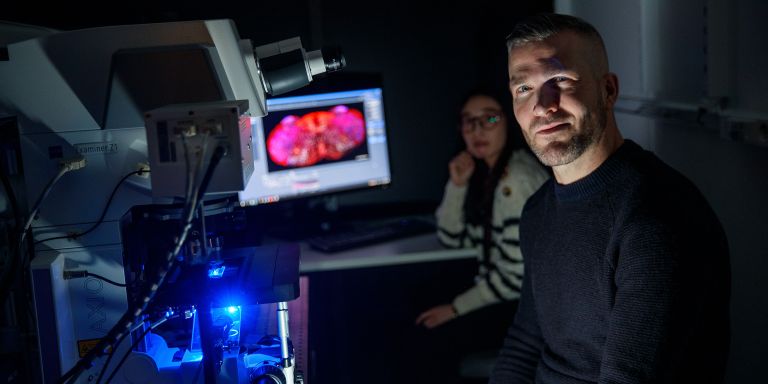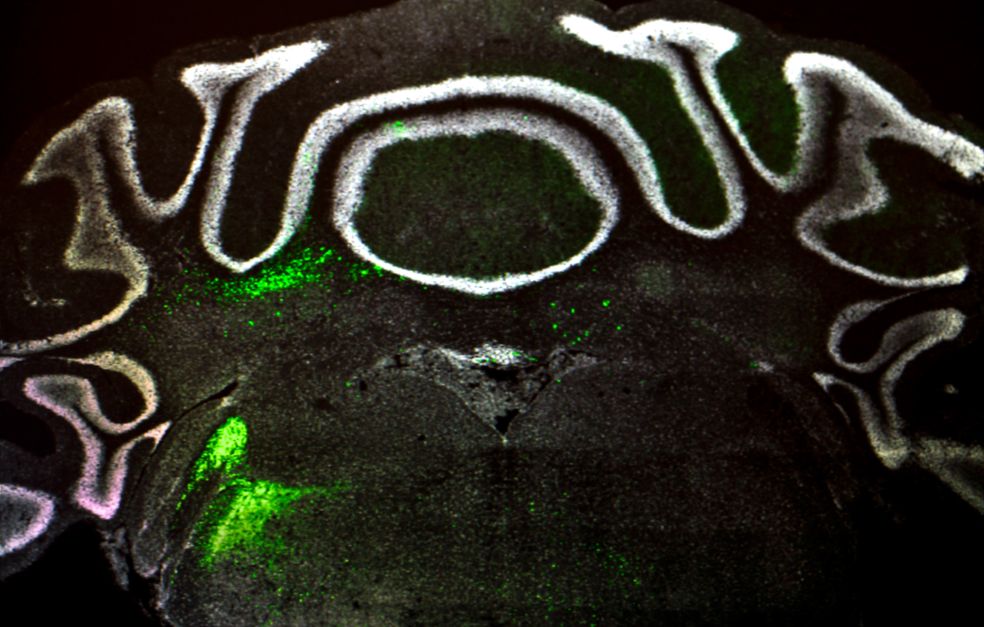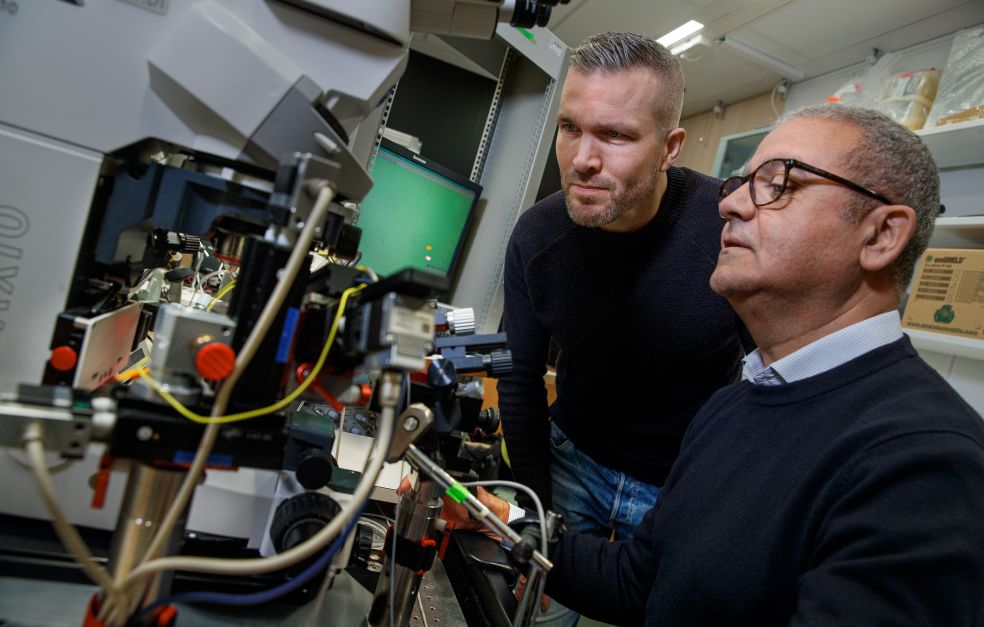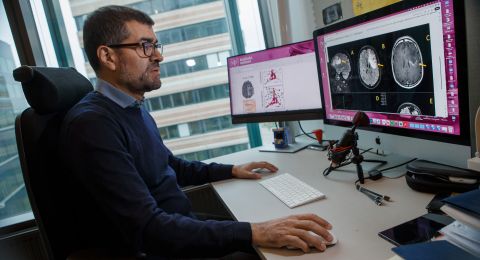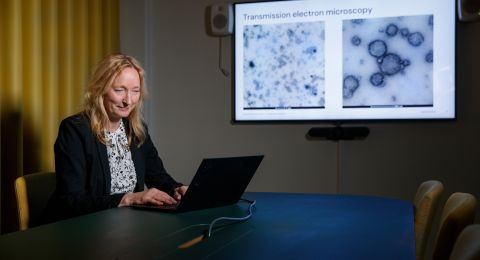
Project Grant 2022
Proprioceptive control of motor action sequences
Principle investigator:
François Lallemend, Associate Professor of Neurobiology
Co-investigators:
Karolinska Institutet
Abdel El Manira
Institution:
Karolinska Institutet
Grant in SEK:
SEK 32 million over five years
François Lallemend is a professor of neurobiology at Karolinska Institutet and has researched the development of the nervous system for many years, including as a Wallenberg Academy Fellow. Over time, he has become increasingly interested in how different types of neurons in the peripheral nervous system are interconnected with the central nervous system, especially the brainstem.
In a new project, the focus is on so-called proprioceptive pathways, crucial for the brain's ability to sense body position and movement.
"It's fascinating that this system is so fundamental for all mammals, including humans, and there is still much to discover about it."
Critical for body movements
The proprioceptive system is crucial for all kinds of movements: when we want to walk, run, or even stand still – information is needed to maintain balance.
"Proprioceptive nodes are involved in activating different muscles. But simultaneous feedback is also needed to understand if we are performing the right movement with the right speed and technique, such as when I grab a pen, for example."
For decades, researchers have studied the role of the proprioceptive system in the spinal cord, but Lallemend's research takes a different direction. He became fascinated by the relatively unexplored area of the connection of proprioceptive neurons to the brainstem.
"The brainstem's sensory role in regulating motor behavior has been overlooked for a long time, perhaps due to the intricacies associated with fine-tuning or correcting ongoing movements, making its study challenging to explore."
Researchers have also been skeptical about whether the brainstem can play a significant role in regulating our muscles and body movements because muscle sensory feedback is perceived as too slow.
"It has been said that this signaling pathway is not fast enough for efficient correction of our motor behavior."
Progress at the cellular level
Recently, researchers from Lallemend's laboratory have made progress. They have identified specific molecular markers for each type of proprioceptor.
"This discovery provides valuable tools for using genetic strategies and conducting experiments in living organisms. This way, they can investigate how different types of proprioceptors are connected to different command centers in the brainstem."
"In our project, we will look at genes and molecules linked to these processes, use electrical measurements to study brain activity, conduct anatomical examinations, and observe how different behaviors are affected."
An internal motion sensor
In collaboration with other researchers, François Lallemend is also investigating another track. Abdel El Manira and his colleagues have made an interesting discovery. In a study conducted on zebrafish, they found that there is a kind of internal motion sensor in the spinal cord. This organ consists of special nerve cells that can sense when the spinal cord bends during body movements.
"They found a completely new mechanism for how zebrafish can sense the bending of the body through the bending of the spinal cord in a form of reflection."
These nerve cells in the spinal cord act as a kind of real-time feedback that helps control movements. The discovery opens up new possibilities for understanding motor control in other species, including mammals. Preliminary data from mice support the results.
In the project, physiologists and neurobiologists collaborate, contributing different ideas, tools, and methods.
"We have different ways of thinking, and this is a great opportunity to work together," says François Lallemend.
Can contribute to the treatment of diseases
In the future, the results could be valuable in elucidating various diseases. However, there is still much work to be done before these findings can be applied to humans and contribute to the treatment of Parkinson's disease, spinal cord injuries, stroke, and other conditions affecting movement and balance.
"We work at a medical university, and it is, of course, important that our results can be used for the benefit of humanity, for example, that we can eventually help restore normal movement ability in people."
But François Lallemend also appreciates the fundamental knowledge that research generates. As a youth, he did a lot of sports. He often thought about how to adjust his movements to achieve higher precision while keeping speed.
"I enjoyed thinking about the subtle, precise movements and how proprioception is such a crucial part of our ability to move, but we still don't know much about it in detail."
The current project partly goes against established truths. In this context, funding from the Knut and Alice Wallenberg Foundation is crucial.
"It's a luxury with long-term support, and it feels good to be trusted to work on bold ideas that can contribute new and fundamental knowledge," says François Lallemend.
Text Nils Johan Tjärnlund
Translation Maxwell Arding
Photo Magnus Bergström
FACTS:
The central nervous system includes the brain and spinal cord. The brain is the center for our body control and our thoughts and feelings. The spinal cord acts as a sort of extension of the brain and helps transmit messages between the brain and the rest of the body.
The peripheral nervous system consists of all nerve fibers that lie outside the brain and spinal cord. It serves a vital function by transmitting information from various parts of our body to the brain, such as pain, proprioception, or touch, and executing commands from our brain to different body areas, including diverse types of glands.
The brainstem is the lower part of the brain and serves as a transition zone between the brain and the spinal cord. The brainstem plays a crucial role in many basic functions such as breathing, heartbeat, temperature regulation and is also involved in many basic motor functions such as swallowing and moving the eyes.
Proprioception is the perception of the position and movements of our body parts. It is the reason we can move freely without thinking about it. In mammals, proprioceptive sensations come from peripheral sensory organs in muscles and tendons. They are transmitted through proprioceptive neurons in the dorsal root ganglia, which send signals to the spinal cord and brainstem through highly myelinated axons.
